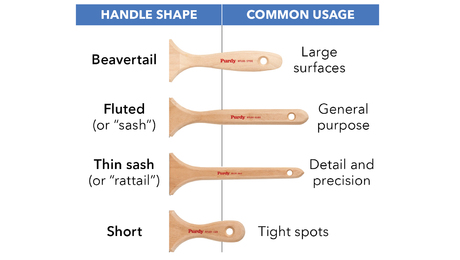We have “stuff” in the crawl space (4′ hi) so we need switched lighting for that space.
Two questions: (1) can I run power to the switch at the head of the crawl space stairs which are located in a ground floor utility room from a GFCI outlet? In other words the switch (and the light) would be GFCI protected.
I’d rather be in the dark in the crawl space than have a fire there because of a short that the GFCI would protect against.
(2) can the crawlspace light be plugged into an outlet controlled by the switch at the head of the stairs or does the light need to be directly wired to the switch?
Thank you.



















Replies
AFAIK, Yes².
The GFCI is not really designed for fire safety. It is designed for personal safety. Now some of the problems that could cause a fire, might trip the GFCI, but not all of them.
I would not be concerned, but if you are I would run another circuit and install an AFCI breaker. They are more likely to detect problems that cause fires and less likely to false trip.
"(2) can the crawlspace light be plugged into an outlet controlled by the switch at the head of the stairs or does the light need to be directly wired to the switch?"
You can have a switched receptacle. But you can't then have a plug in and run it to permanat light sockets.
But why. Why not just wire it to a couple of permanat porclien lamp holder.
Bill,
>>But you can't then have a plug in and run it to permanat light sockets.
Whoopps, caught me by surprise there, care to elucidate?
SamT
What kind of permant wiring would you use with a plug.
Run rommex and then stuff it into a plug?
Run lamp cord or SO into a box and mount the lampholder and staple it up?
>>Run romex and then stuff it into a plug?
BTDT many times, didn't know it was illegal. Way to stay out of code issues in CA. Plug it in = no code = no permits, etc.
Sometimes staple(?) lamp cord. Sometimes run romex to a box, run cord from that box to plug.
Many times run NM(? heavy, round, black 10/3+G) to plug.
When stapled or otherwise affixed semi permenant, make sure no kinks, pinches, abrasions. When run loose, make sure neat and no trip hazard, kinks.
Once ran heavy flex cord plug to plug, stapled romex from box to conduit, in conduit to plug then to switch to fixture. Structure was freestanding, unattached to ground or permenant building. Inspector came by for beer and he loved it, said it would pass if it would be inspected.
I dunno codes that well, just know a bit 'bout 'trons.
SamT
hey moose,
In your situation, there's no Code requirement to protect a light fixture with a GFI.
A GFI will NOT necessarily protect the circuit (or you) from a short (and I mean a hot-to-neutral short). A GFI is designed to cut off power if there's a hot-to-ground or a neutral-to-ground fault.
It's the circuit breaker that's designed to protect the building wiring from dangerous overheating and reduce the chance of consequent fire if there's a line-to-neutral short circuit (i.e., from the hot wire to neutral wire), or there's a short circuit from hot to ground (a line-to-ground fault). Be advised that even in these cases, if the resistence (actually impedence) of the fault is high enough, considerable fault current (several amps, for a 15 or 20 amp standard breaker) can exist without tripping the breaker. In residential settings, high impedance faults aren't common. Also, an arcing (sparking) fault won't necessarily trip a regular breaker, and that's why arc-fault breakers were developed.
So anyway, I wouldn't put the light fixture on a GFI, simply because I woudn't want to be caught in the dark if the GFI trips. And GFIs do nuisance trip, sooner or later. As far as protection from shock or electrocution, if you properly install UL-listed materials (switch, cable, and fixture), and you turn off the circuit when replacing the light bulb, there's no chance of getting shocked or electrocuted.
You mentioned plugging in the light. The Code does have something to say about the use of temporary lighting. It says that lighting devices designed for temporary use can only be used temporarily (DUH-OH!). So, if you want to use a drop light or some other cord-and-plug connectd light, that's fine. Just don't nail or staple the cord up and leave it in place. If you want a fixed light, hard wire it o the switch.
If you are going to do some work on the wiring, please consider getting a good electrical DIY book, like Rex Cauldwell's "Wiring a House" or the Black and Decker DIY electrical book. There are a lot of details in electrical work that are not intuitive but are essential for safety. For instance, I've seen way too many cases where someone used a cut-down extension cord hung on bent nails to wire in a fixture, no grounding wire (or not connected), with wires just twisted and taped for splices (no wire nuts). The light works O.K., but the installation is an accident waiting to happen.
Good luck,
Cliff
you got stairs leading to a crawl space? wow!